Tips For Starting a New Garden (and a Giveaway!)
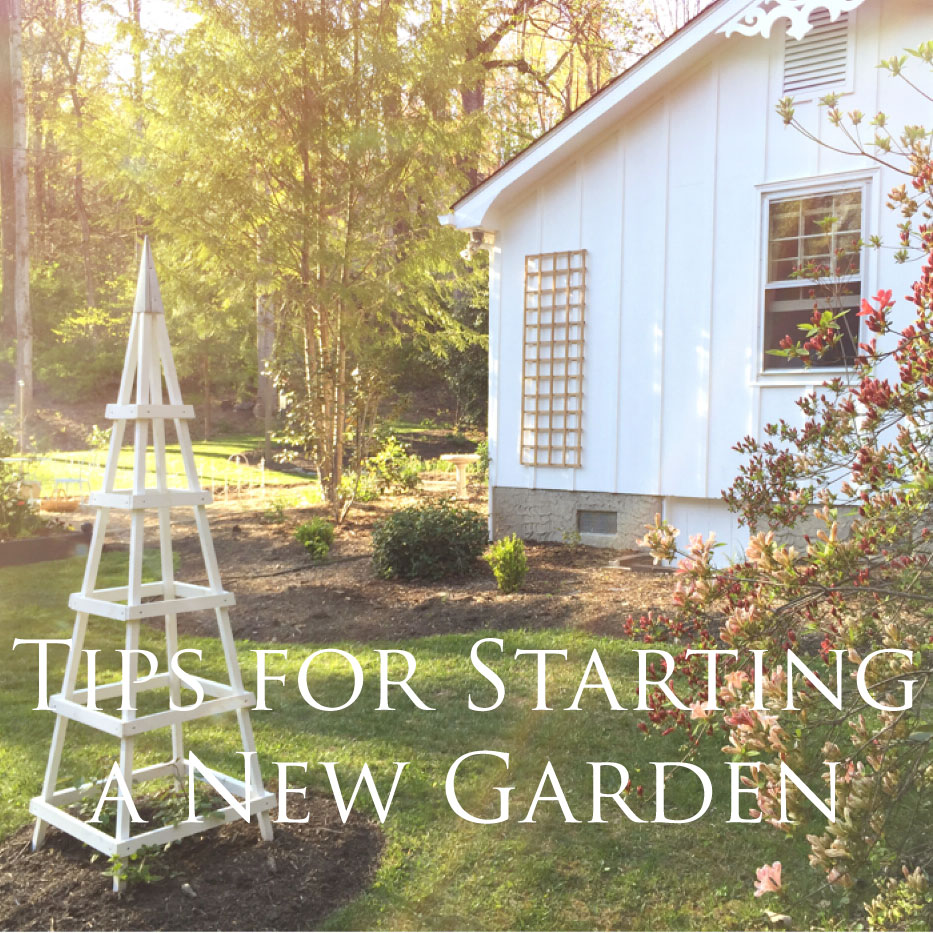
Let’s have some fun, shall we? I recently jotted down some of the things I’ve learned over the years for the person who might be out there reading this and at a loss as to where to start when it comes to planning their new garden. I think it would be so lovely if all of you gardeners with experience shared your ideas in the comment section so we can learn from one another. Since it’s still January, the longest month of the year, I thought this might be a good winter diversion.
So! If you’d care to leave a comment, sharing something you’ve learned (see bottom of post) I’ll draw a random name from the comments and send that lucky recipient a goodie bag, much like this one.
☆ ☆ ☆ ☆ ☆ ☆ ☆ ☆ ☆ ☆ ☆ ☆ ☆ ☆ ☆ ☆ ☆ ☆ ☆ ☆ ☆ ☆ ☆ ☆ ☆ ☆ ☆ ☆ ☆ ☆ ☆
Winner Announced! Thank you ALL for sharing your tips and experiences. DENISE you were randomly selected and are our winner! Here is what Denise shared:
“Learn how to grow from seed! Many of the plants you find in garden centers get boring year after year. In my garden I grow all types of snap dragons, double petunias, ageratum, pansies, dwarf sunflowers, cosmos, and countless other plants that I don’t find at my local garden stores. When people visit my garden they are amazed at the plants they never even knew would grow here. Also you save so much money when starting from seeds and experimenting is much more affordable. And starting your seeds early on a heat mat is a great way to get through the end of winter 
Great advice, Denise. I’ll be in touch soon to talk about your goodie box.
☆ ☆ ☆ ☆ ☆ ☆ ☆ ☆☆ ☆ ☆ ☆ ☆ ☆ ☆ ☆☆ ☆ ☆ ☆ ☆ ☆ ☆ ☆☆ ☆ ☆ ☆ ☆ ☆ ☆ ☆
Let’s get started! Here are my Tips for Starting a New Garden. (Remember to share your tips in the comment section. We want to hear from all of you!)
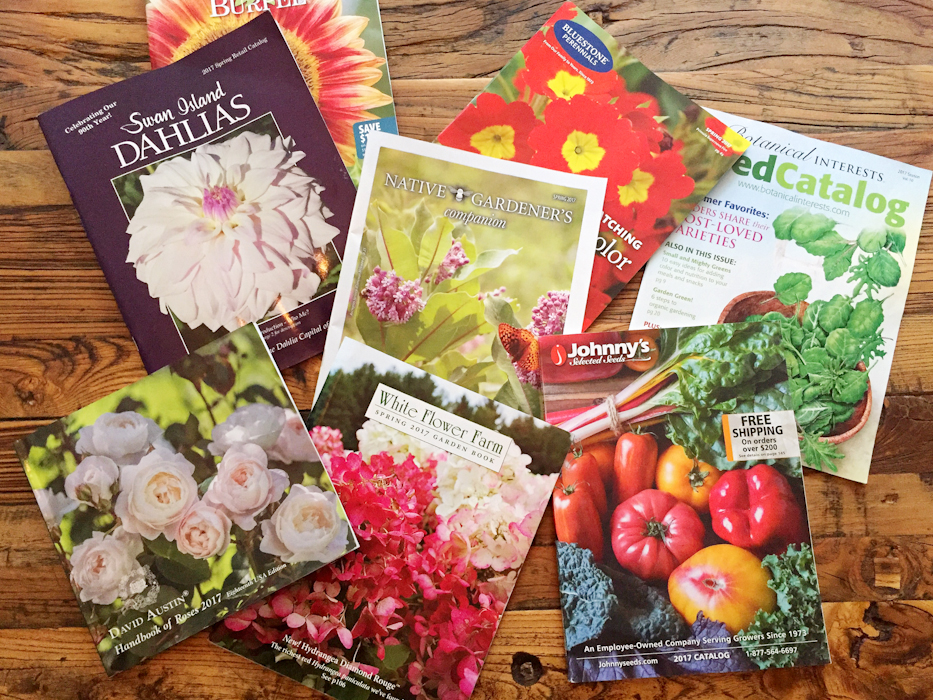
If you’re just starting out, ask yourself, what do you want from your garden? This might seem like a no-brainer, but it’s easy to get distracted and off course, especially when shopping for plants. It helps to have a clear idea of what your ultimate goal is when designing your garden. For example: Do you want a serene koi pond that you can relax beside at the end of the day with a glass of wine? Would you prefer rows and rows of colorful flowers for cutting, sharing and bringing indoors? Are you thinking of converting your front lawn to something more water-wise? Or how about a garden with layers, textures and colors that draw in songbirds and pollinators from spring to frost? Is a fragrant rose garden filled with old and rare cultivars the top of your list? Do you dream of growing your own fruits and vegetables organically for you and your family? This dreaming stage is such fun and winter is great time to plan. Gather up books, magazines, search Pinterest boards, cut and clip plant catalogues, follow other gardeners on Instagram, etc. to help you decide what you want most from your garden. (If you’re like me, you want all of these things!)

GET TO KNOW YOUR SPACE
Your space to garden may be as small as an apartment patio or as large as acres and acres of property. Whatever the size, getting to know your space is key to a successful garden and will require some important preliminary work, lots of observation and patience. Here are some things I’ve learned:
● Perform a proper soil test. Has this been drilled into your head so much that it’s like, ugh enough already? Yeah, me too, but it is actually quite easy and will save you headaches down the road. Your local county extension office has soil testing kits and they might even be free. Cornell University also has comprehensive soil testing services (but it’s a bit on the pricey side.) If you’re trucking in compost blends from a local source, test that, too! You’d be surprised. I tested the compost blend we put in our raised beds and the P and K levels were off the charts.
● Know your climate zone, but also find your hot and cold “pockets” in your space which may make that part of the garden feel warmer or cooler.
● Identify problem areas such as: where a windbreak is needed, privacy concerns, water drainage issues, shady spots, dry/wet area, trees that may cause problems, invasive plants that need to be removed, possible concerns with wild animals (such as deer) and all that jazz.
● Be mindful and practice common sense stuff like asking permissions and calling power company before digging.
● Observe the sun throughout the year. Sometimes I feel like I’m getting in touch with my inner druid obsessively watching the paths of the sun in our garden, but, as you know, it changes dramatically throughout the course of the seasons. In our garden, which is surrounded on all sides by trees, this makes for tricky garden-design scenarios.
● Find local, reliable companies that can supply your materials. This took us a bit of time initially to find people who could deliver our stone, mulch and compost.

BUILD THE FRAMEWORK (Hardscapes, evergreens, etc.)
The framework of your space is what is often called the “bones of the garden” such as: fences, trellises, walls, rockeries/boulders/drybed streams/pea gravel, arches, arbors, decks, patios, paths, birdhouses, sculptures, fountains, benches, etc. I also consider evergreens (large or small) to be part of the framework of the garden as I do large shrubs and trees. I try to install as much of the framework as I can initially even if it seems boring because this is what will hold your garden together and give it shape even in the middle of winter when nothing is blooming.
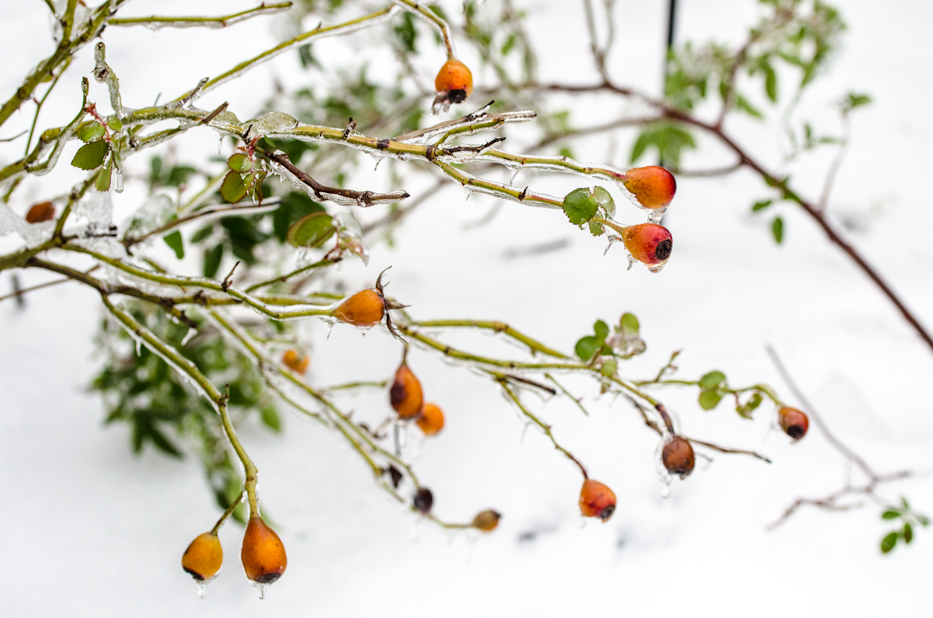
PLAN(T) FOR WINTER
Some valuable garden design advice I received years ago, when I moved to Pennsylvania from California, was to first and foremost, plan and plant for winter. Planning for winter is sort of a part B of the Building the Framework step because if you’ve already considered your hardscapes, then you’re well on your way to having a garden that looks nice year-round. But when it comes to choosing your plants, here are some things to consider:
● Does it have interesting bark (texture and/or color)?
● Is the structure of the plant unique when the leaves are gone?
● Does it produce colorful berries or interesting seed heads?
● Is it evergreen?
● Does it bloom in winter?
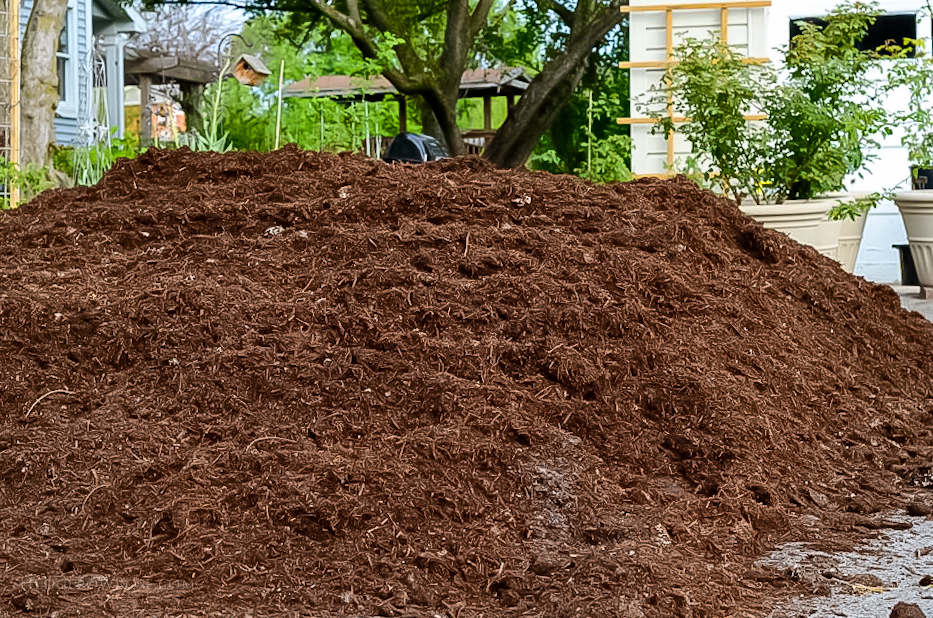
INVEST IN YOUR SOIL AND PREPARE FOR THE LONG HAUL
● Building up your soil is the best investment you can make in your garden. It takes time and money but is SO WORTH IT. Get that soil test. Make necessary adjustments to pH and other nutrients. Invest in compost deliveries!
● Consider planting the things earlier on that will take longer to establish and yield such as asparagus and fruiting plants. You’ll thank yourself down the road that you did that right off the bat.
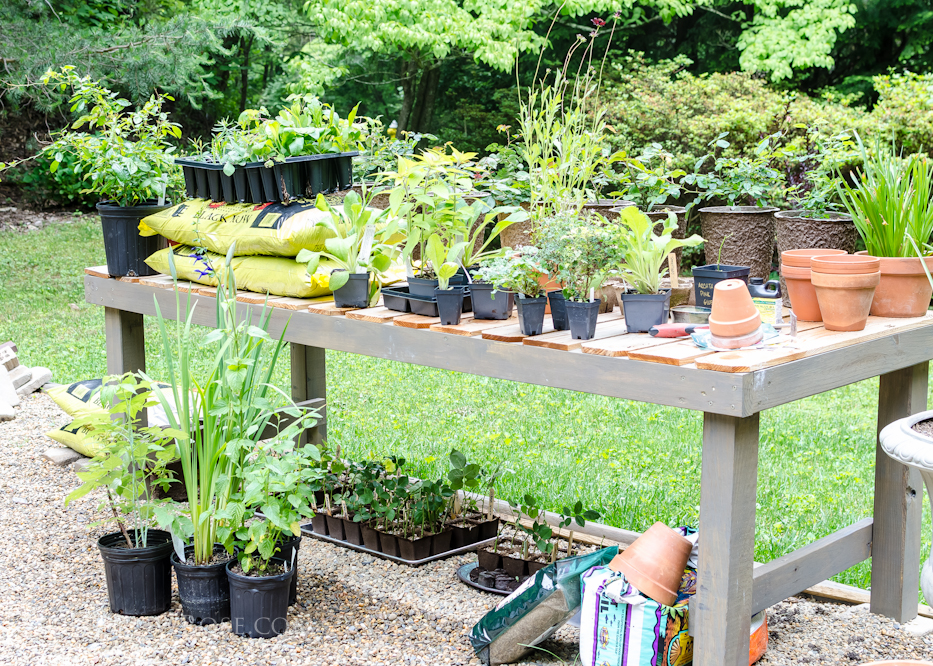
ACQUIRING PLANTS
It’s really easy to get caught up in the rush of excitement when plant shopping and purchase something that is ill-suited for your garden. I have done that plenty of times myself! These days, since I carry my iPhone everywhere I go anyways, I google a particular plant cultivar right there in the store and check it’s requirements as well as looking at images of it before purchasing. And, of course, if I’m shopping online, I do the same thing: fact check it against other sites, such as HMF or Dave’s Garden. Some other tips when acquiring your plants:
● Make sure that the plants and anything else you’re adding to your garden are safe for your children and pets. There are also some things you might want to avoid, like, for example, if you’re living in So Cal, maybe you don’t put in that water-hogging lawn. And it would be wise to make sure you aren’t introducing something that’s invasive to your garden. That kind of thing, you get the gist. Outside of that, keep in mind that plants come in and out of fashion just like anything else. (Remember the ornamental grasses craze?) So I say, grow what you love and the heck with whatever “experts” or magazines are telling you to put in your garden.
● “Passalongs” may be inexpensive or free, but they’re not always a good thing. You may end up with a real garden thug that quickly takes over your garden. Fact-check it first before bringing it home.
● Plants on discount! I know some people will disagree with me because buying a plant that’s been put on sale at your local nursery may mean you end up with something that’s got a lower survival rate. But! I’ve found some great plants for next to nothing this way! So I guess I’d say just use common sense when shopping the sales. PS: I do this when shopping for fall bulbs, too. I purchase in advance the ones that are unique or know will sell out quickly, but for bulbs like narcissus I just wait until they get marked down before buying.
● When it comes to growing edibles, consider the cost/effort ratio, i.e. what is going to cost a bundle at the shops that you can simply grow yourself. You might also want to include fruits/veggies that are hard to find that you enjoy. For example, we like to grow alpine strawberries which don’t transport well but are wonderful in a home garden. And, of course, grow what you’re actually going to want to eat!
● Propagate your own plants (be mindful of patents) and save seeds.
● Join a local plant society. Get involved in a Master Gardener program.
● Shop plant collections! There’s no shame in purchasing a pre-planned collection of plants from your favorite nursery. Collections are curated to fulfill specific light, water and size needs as well as offering a planting scheme to tell you where to put what. This is a great jump-off point for new gardeners.
● Space properly, i.e. keep in mind the mature size. If I had to name my biggest fault when it comes to garden design, this is it! I always tend to forget how big something is going to get, and then I’m like, “Uhh, what do you mean you didn’t want this rose to eat the house? No? Not good?”
● Start with younger/smaller plants and grow them on. Takes some patience, but it’s a real money saver.
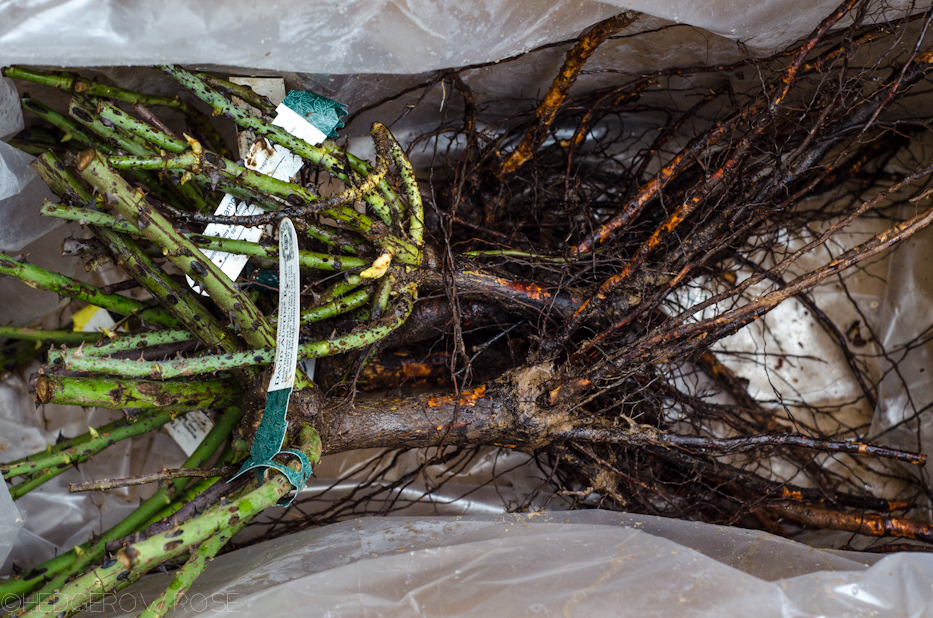
SHOPPING FOR ROSES
● SEE TIPS ABOVE. But also, visit local rose gardens (hopefully ones that don’t spray for pests or disease) and see what is growing well in your climate. Reach out (and join!) your local rose society. You’ll learn so much from fellow members and probably get some free roses out of the bargain.
● Research the rose before you impulsively buy it. This is way easier said than done, boy don’t I know that. You’ll save yourself the headache and money, though, if you do a bit of research first to make sure it’s actually going to be a keeper.
● I like to reserve roses I know I’m going to want and that may sell out quickly, sometime in January for the following spring delivery. I try to get roses on their own-roots if possible. See my ROSES 101 page for more details on this stuff.

TIPS FOR RENTERS
You’re renting and yet you want a beautiful garden. I HAVE SO BEEN THERE. In fact, if you’re new to this blog, you may not know that all the posts from the first 5 years or so are from the garden at our rental house. I also spent many years in many apartments in San Diego that I managed to have small gardens at so I’m here to tell you that you can make it work, but I do have a few tips to share.
● First, I guess it goes without saying, check with your landlord before you do any major changes. Chances are good that they will be excited about your plans and want to help you see it through.
● See if your landlord will be willing to pay for plants, soil, mulch etc. if you do the labor.
● Grow in containers!
● Propagate your favorite plants so you always have a “back up” in case you need to move (and leave plants behind.)
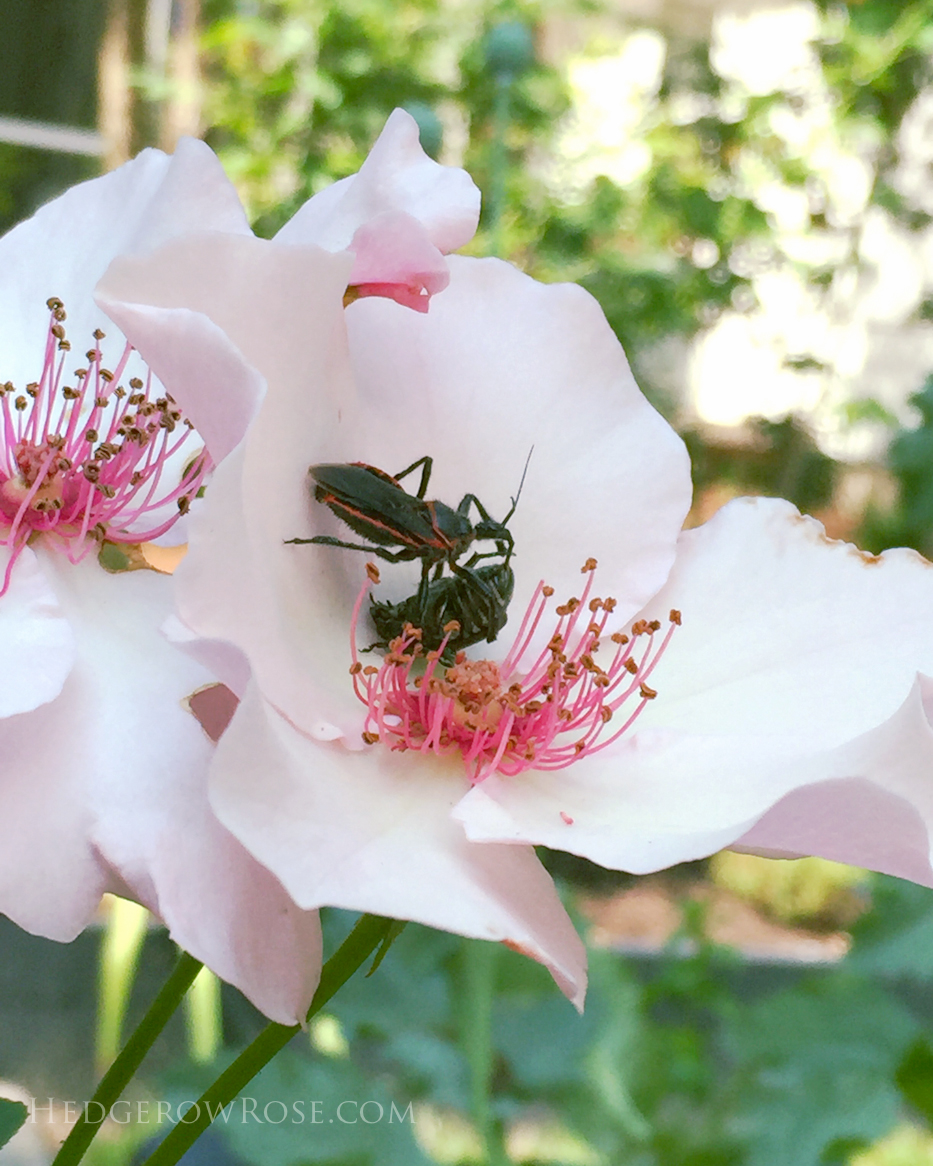
ENCOURAGE A NATURAL BALANCE
If you’re been reading my blog, then you know this subject is very near and dear to my heart. When people ask me why I don’t spray my roses, my bland answer is because I’m lazy. But, the truth is, it has nothing to do with that. I just think it’s better in so many ways to avoid pesticides which I’ve written specifically about here and here. It takes patience and a bit of work initially to build up your beneficials but I think you’ll be happy you put in the effort.

DOCUMENT
● One of your greatest gardening tools is your camera! Take photos of your garden throughout the year to see where attention is needed. I like to go through my photos in the winter when I’m doing my planning. It definitely helps with the winter doldrums.
● Save the labels of the plants you’ve acquired to refer back to. I know some gardeners have developed a really nifty filing system for this but I just tuck them in a flower pot in the shed and call it a day.
● Save the seed packets for same reason–and it’s helpful to jot down when you sowed them to refer back to for next season.
● Keep a journal (or a blog!) Share your photos on your favorite social network. (It’s a great way to meet other gardeners from around the world.)

TOOLS AND YOUR HEALTH
Invest in good tools. Treated well, they’ll last you decades. Nice quality used shovels/rakes/etc can often be found at flea markets. I found my favorite shovel at a yard sale for $5! Keep your pruners sharp and clean. Save yourself a melt down and get a hose that doesn’t kink. Buy a sturdy wheelbarrow. Find gloves that fit you well and wear them every time you’re gardening to protect your hands. Get yourself a pair of muck boots with tread. Don’t leave your rake lying in your yard so that you won’t accidentally step on the tines causing the handle to swing up and smack you in the forehead. I might know a little bit about that. 

BE GENTLE
Be gentle with yourself and with the environment. You’re going to make mistakes. You’re going to accidentally kill things! It’s ok to change your mind and move plants a gajillion times before you find a place for them you like. If you’re going to use pesticides/herbicides do so carefully and cautiously. Think about your neighbors and be respectful of them when planning your garden (i.e. maybe don’t plant that mountain ash tree where it’s going to drop berries all over your neighbor’s parked car.) On the same token, plant your garden in a way that might bring someone joy, like that big row of tulips along the front sidewalk for people to see on their way to work, donating extra veggies to a local food bank, bringing cut flowers to your child’s teachers, your church and neighbors. Now, more than ever, we need to be gentle with ourselves, others and the environment. Tending a garden is balm for the soul and a wonderful way to express an act of kindness. My final tip? Just start. The world needs more gardeners.
OK readers, now I throw it out to you: What kinds of things have you learned as a gardener that you would like to share with someone who is just starting out? Favorite plants? Things you wish you hadn’t planted? Your favorite tool? Best design tip? Worst mistake? 

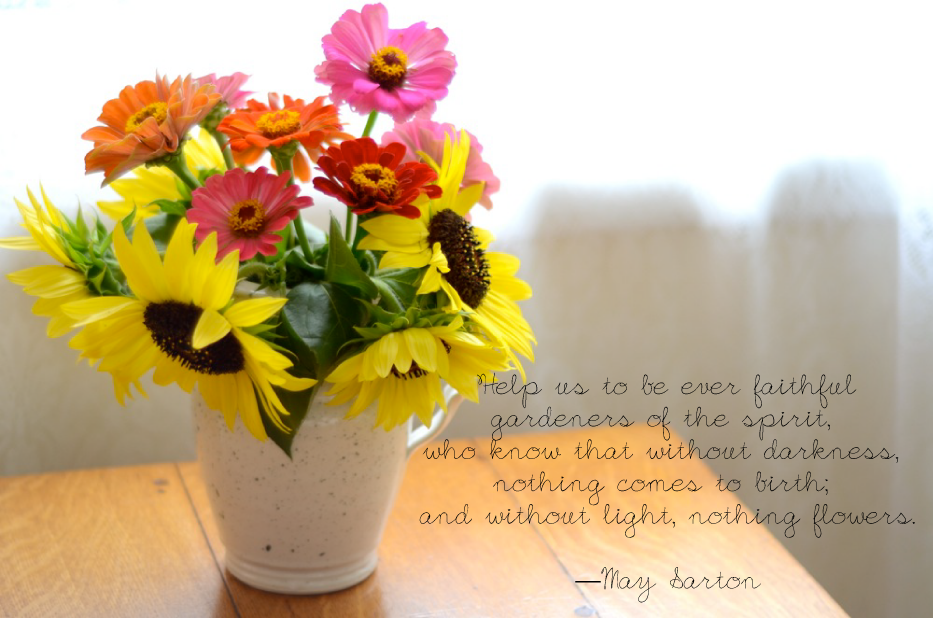
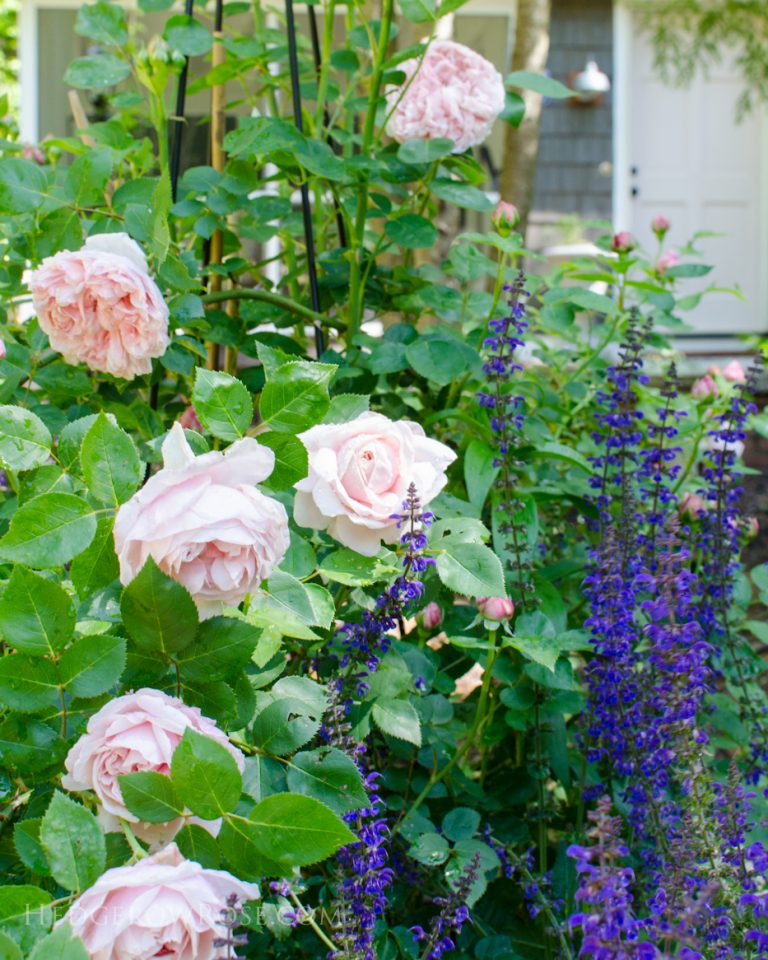
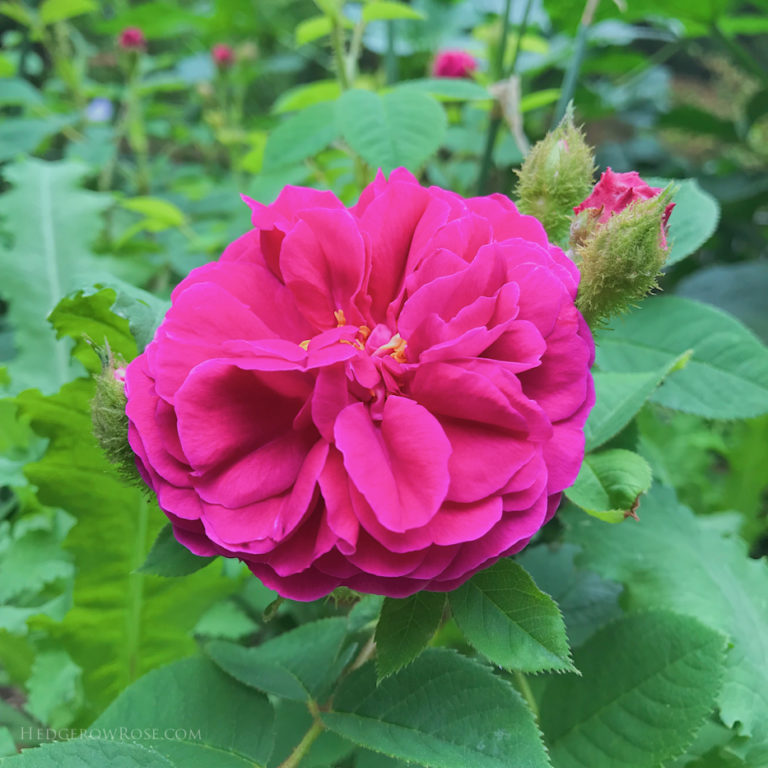
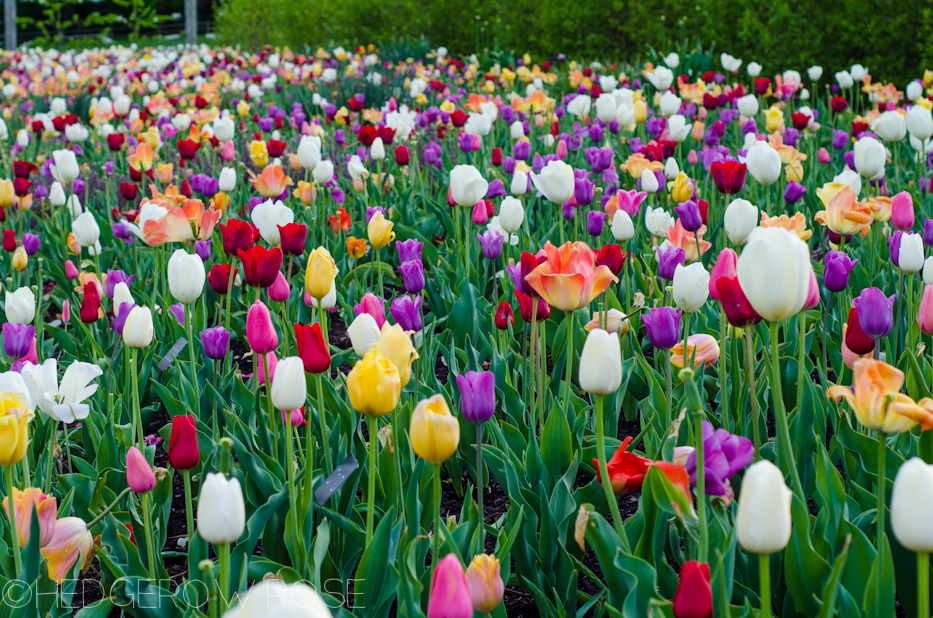
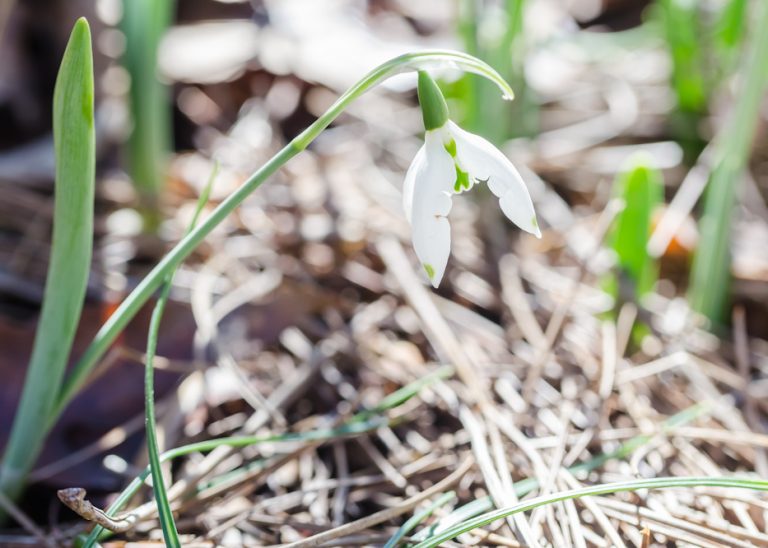
#tipsfornewgardners. It can be expensive to create a new garden or up keep a garden. My first garden was last year and I didn’t get to accomplish everything! Replant from friends and family that can give some of their bulbs away! I did a whole garden with different bulbs from a friends garden and I can’t wait to see it fluirsh this year!
Great idea, Jeniece! I’ll bet your spring garden is going to be just lovely.
Though I love daffodils and tulips adding a wonderful splash of colour in spring, they can look untidy and spoil the look of other plants once the flowers have finished leaving Just leggy drooping leaves! I now plant my bulbs in pots that I can place amongst the beds as they flower, and be easily removed as soon as they look tatty. Hope this helps!
This is a great tip, Erica. I try to grow other perennials to hide the leaves of the waning daffs but I so hear ya, bulbs in pots is a wonderful alternative!
#1 .. Beware of innocent looking, smiling ladies at plant fairs handing out pretty little seedlings for free. I have been trying to eradicate an invasive thug from my garden for years that I acquired in such a way. I even thanked her!
#2 .. My best tools came from garage sales and my favorite is a $1 hand rake from a funky little hole in the wall discount store. It is invaluable to get under rose bushes and between perennials. I use it every day. It is worth 20 times that to me.
#3 .. Along with HMF and Dave’s Garden, Gardenweb.com is also a good place to go with questions.
Laurie, what is the rose at the top of this post, 3rd photo down? Thanks!
I LOL’d at your “innocent-looking smiling ladies” haha! That’s happened to me a bunch of times, too.
That rose is ‘Boscobel’. Really fragrant and beautiful DA rose but it’s been a bit black-spotty in our garden so we’ll see if it lasts. I think there are a few more photos of it in this post.
Thanks! I didn’t realize Boscobel has such nice long stems. I remember that post with your lilies. Love lilies with roses!
That photo was right after I brought it home from the nursery and it had that fantastic flush of flowers but after that it was sort of meh. Lilies are a must-have, I agree!
I added to my micro flower farm last year while I was laid off, and like everyone else made mistakes. I found that I’m going to HAVE to put in soaker lines or drip lines, spending hours watering is not going to work since I added 3 more beds (raised beds as ground is so incredibly bad and beds are over utilities). Major mistake was not supporting my dahlias like I have seen – yeah, torrential rains – mud – flopped over dahlias taking up a lot of space turning back up to the sun. Lost some plants I REALLY wanted to grow due to not knowing their watering requirements – knew everything else about them, except that. Researched them – but research didn’t include that little tidbit.
Wow I am so glad you mentioned these two very important things: working out proper staking and irrigation right from the get-go. Really helpful, thank you!
Consider planting native plants. They are more likely to flourish in your garden even if you inadvertently neglect them, because they are accustomed to the climate and soil conditions of your region. You might find a new treasure! My lucky find was beauty berry.
Oh man I had a real head-slap moment when I read your tips about native plants…of course! And if anyone is reading this a looking for a place to purchase natives online I got a whole bunch from Prairie Moon last spring and had a good experience. Thank you for the awesome reminder, Kitty!
Yes! Awesome tip Kitty! I’ve been try to incorporate more natives for those reasons.
Great post Laurie!
My #1 tip is soaker hoses. If you can afford them and the slightly elevated water bill. This year we also got a timer and it was amazing! Set for 1 hour (2 if really dry) every 3 or 4 days (depending on the type of plant) and you don’t need to remember to water. Plants need water and unless you’re getting good rain, hand watering isn’t usually enough, and sprinklers can waste water of not set up properly. Soaker hoses are great!
Bulbs are so cheap for what you get. They’re perennials that last year after year and bloom in early spring through summer in all colors and flower types. Look beyond Daffodils and Tulips to Scilla, Pushkina, Allium, Triteleia, Leucojum, Crocus – all easy to grow and so different.
Biggest tip – don’t be afraid to try. Be bold, be brave, and go for it! Gardeners are super nice and willing to help and give advice.
YES! All of this is super advice, Stephanie!
My #1 tip is Break the Rules! Last fall I decided I wanted morning glories. Did I want to wait until spring? Nope! So I planted seeds on September 4th and enjoyed my first bloom on October 13th and many more after that until a hard frost finally took them out in December. If I had waited until spring I would have missed out on those months of beautiful blooms. Know your climate and then experiment, experiment, experiment!
I absolutely love this. My husband used to ask me all the time, “can you do that with this plant?” and I’d just shrug and say, “I guess we’re going to find out!” Yes, break the rules and have fun!
Wow! All of your thoughts are spot on. As a self taught gardener and lover of all things ‘dirty’, and local landscape designer. Just one thing comes formost to mind. Either start small or hire someone who loves your garden. I can’t begin to tell you how discouraged people get, and often into a weedy mess, when they plan bigger things than their time can handle. P.s. Love your pics to help me through the winter
Thank you Michelle! Anything to get us through these darker days, right? (and I think I mean that on many levels. ) I so agree with your very wise words, get help from a landscape professional if you can. Even if it’s just for helping clear the space to get a blank canvas. Thank you for weighing in!
) I so agree with your very wise words, get help from a landscape professional if you can. Even if it’s just for helping clear the space to get a blank canvas. Thank you for weighing in! 
For me last year we had rabbits eat our garden.. I started green beans i think 3 or 4 times and every one if them got eaten along with the cauliflower… ugh so frustrating. So if you see any critters around build something so they cant get in then take it down once the plants as matured.
Another is if you want carrots build some kind of screen to put on them so the swallowtail butterflies will actually lay their eggs on what you put out for them and not on your carrots . I saved oh probably 15to 20 Cats from being smushed and have them inside right now waiting for spring.
. I saved oh probably 15to 20 Cats from being smushed and have them inside right now waiting for spring.
For me every year i plant tomatoes and I am always underestimating how big they get and never have the right support.
The burrito method for starting rose cuttings has been the best thing that I have learned by far!
This year I am getting The inflamous Cafe Au Lait dahlia and I have been reserching on how to tend to her so that is going to be fun!
So true about the carrots and butterflies! Sounds like you’re a good butterfly mamma taking care of all those babies.
You’re going to love your CauL’s…and here’s a tip from me, use a very strong stake. They get massive!
Thank you for the great reminder about the burrito method for rose propagation. For those of you who are wondering what this is, there is a great tutorial here.
My biggest tip is one you already said but it is worth saying again. Mulch, and then mulch more, and even more! It’s so good for the soil, the plants, saves on your water bill if you don’t have a well, and so many more benefits. Also a lot of places will mark down ripped bags of mulch 50% off (Lowes & Home Depot) so it is less expensive. Of course there is nothing better than free and lots of citys/towns/lumber mills/Amish have a free mulch or wood chip give a way. Sometimes its only certain times of the year, some times year round. It doesn’t hurt to call around, even if you have to rent a truck its usually much cheaper than buying by the scoop or doing half wood chips and half fancy mulch.
My other tip is read,read, read, local libraries have lots of gardening books, there are plenty of online resources. I was pruning and planting my roses wrong for years (I call it the tough misguided love era) until I read up and realized. don’t be ashamed to check out those “picture books” the more pictures the easier it is to understand the very complicated sounding instructions of pruning and planting.
My last piece of advice is as said above, don’t be afraid to buy the dying perennials on the mark down rack at your local store (Lowes etc) water them, cut them back, plant them and sure you wait a month or two or in some cases even a year. For me, most of the time they come back great and it saves me so much money! I look at it this way, if I can get 4 plants at 75% off, even if one or two don’t make it, I still saved money, than if I bought 1 at full price, so still a win. A great way to also test or add plants that you may not be able to afford or to make a mass planting quickly.
I love your tip about reading, reading, reading. We are constantly taking books out of the library and if it’s one that’s truly special, I add it to my collection. In the wintertime, I like to keep the biggest stack on the coffee table to lose myself in and think spring thoughts!
PS: My latest favorite is “Virginia Woolf’s Garden: The Story of the Garden at Monk’s House”
by Caroline Zoob
I will definitely check it out, I love finding new book treasures.
If you haven’t already, you must read ‘Chasing the Rose An Adventure in the Venetian Countryside’ by Andrea de Robliant. I was surprised, by chapter 3, I was caught up in the mystery and I very much enjoyed how the mystery/history unfolded. I did have the desire to run off to Italy, but as we are already planning a trip there in 2018, I guess I can wait until then. haha
I just looked up that book and it sounds amazing, thank you for the recommendation! How wonderful to be taking a trip to Italy. I’d love to go there someday…so I’ll just live vicariously thru you.
My biggest lesson in the past 15 years has been to think in three dimensions. All my garden plans have always looked fabulous on paper and my plants always have enough room to spread out, but all my plans until this year have been “flat.” If you buy smaller perennials, like me (cheaper and less investment if they die), research how long they take to mature *in your zone*. You don’t want to always have to look down at a garden– sideways and up are nice directions, too! I guess this sort of falls under your “plant for winter” heading, but plant for summer, too! Specimen plants are fun, but when you have a garden full of them and it’s not greater than the sum of the individuals, it’s going to be vaguely disappointing no matter how good the specimens are.
My second biggest lesson is this: vegetable gardens will NEVER be worth the investment unless you actually make an investment. If you’re growing vegetables with the goal of saving money, you need to be prepared to sink a hefty amount of effort and resources into preparing your garden site. Slapping things into the bare ground will never pay off. Also, growing any vegetable in pots besides tomatoes will likely end up as more of a hobby garden than a cost-effective one. Do your research and figure out your goals, and have fun! I mention this because I see lots of cute garden ideas on social media sites that cut corners right and left. Most of the time if you try to save money at the beginning you’ll lose it later. Many of these ideas are either just for show, short-lived and non-cost-effective, or flat-out won’t work (growing lush crops of herbs in your kitchen in mason jars, for example).
Also: do you save those little cardboard pictures that come stapled onto bags of bulbs and things, because they’re so pretty and you have a vague idea of making some sort of album but they just take up tons of room and you don’t want to throw them away? Cut them into little bookmarks and donate them to your local library (or school library). Patrons will love them and you can clean out all those shoeboxes without feeling bad.
YESSSS to your tip about the veggie garden. It is definitely a sizeable initial start-up cost/effort but so worth the investment if you do it right. Otherwise, you’re just fixing your mistakes down the road and that can be so frustrating.
Thank you for your fabulous advice!
Learn how to grow from seed! Many of the plants you find in garden centers get boring year after year. In my garden I grow all types of snap dragons, double petunias, ageratum, pansies, dwarf sunflowers, cosmos, and countless other plants that I don’t find at my local garden stores. When people visit my garden they are amazed at the plants they never even knew would grow here.
Also you save so much money when starting from seeds and experimenting is much more affordable.
And staring your seeds early on a heat mat is a great way to get through the end of winter
Oh my gosh, Denise, SO TRUE. The money to be saved from growing your own plants from seed is staggering. I remember the one year, I planted out about 100 stock seedlings and when I told my husband how much money we saved he was pretty impressed!
And you’re so right, starting seeds in late winter is such a great way to beat the winter blues!
Hmm…the three things that I learned are:
1. Fall planting can work out much better than spring in warmer areas (KS) Trying to keep roses alive in a hot spring is much harder than mulching in the winter
2. Once established, plants will mostly get along just fine on their own. It’s good to keep up with the garden weeding and pruning, but if you fall behind, don’t worry too much, things will still be there when you get to it in the fall. (Took me 3 yrs of killing myself to find that one)
3. Try to find things that grow well in your area. The latest and greatest blueberry may look great in a catalog in Jan, but watering, acidifying the soil, and moving it around in the summer to try to get the most shade will lose it’s novelty around the second week of 100 degrees.
Joe–these tips are wonderful. When I read the first one, I was nodding along, because that is so true. I have learned since we moved to the south that there is only a small window of opportunity to plant a bareroot rose. If I wait too long, they fry in the late spring heat. Fall planting has definitely been the way to go!
Super suggestions. Thank you for your comment!
Don’t assume that a plant for sale in a local store is actually suited for your area. Check those plant tags or do some quick internet research before purchase! My first year as a gardener, I bought so many lovely plants in local shops, only to discover (the following spring) that they were not at all hardy in my zone. Lesson learned the hard way. Even if it is labeled as a perennial, it might not be in your area.
Speaking of perennials, did anyone mention that there is a difference between perennials and annuals? It was one of the very first things I learned as a newbie.
Oooh that is a hard lesson. One I think we can all relate to. Good point, Cassie, I’m glad you brought that up!
And no I don’t think the annuals vs perennials (and even biennials) topic has been mentioned yet so thank you so much for the reminder!
2 tips: 1) Patience. Both with yourself (it takes time to figure out what will work in your garden) and with the plants (some need a few years to really establish before they get going. So many times I’ve herd of people that give up on roses in one season because they didn’t get the results of a mature well established plant right away. 2) Enjoy it. Gardening is something you can do just for you. Trust your own taste as to what will bring you joy. One person’s bright fragrant garden is tacky gawdiness to the next. Who cares. Go with what you love.
Mishty, you’re a gardener after my own heart. I’m not a naturally patient person but gardening has made me much better about that. And I could not agree with you more–your garden is for you so enjoy every moment.
Mishty, so we’ll said!
Gardening can get expensive if you are not patient. I have this problem if I see a plant, I have to buy it right away so I learned really quickly the tips on how to save on plants. My #1 tip would be to wait and see if you can get some plants from friends/family or even end of season sales at the garden center. I never pay full price for anything anymore. You shouldn’t either!
That’s a tough one for me, too, Julie! When I see something I love, especially with regard to roses, it’s hard to practice self control. You are wise, though, to wait and see if you can get it for less (or free!) Smart cookie!
Ah so many good tips here! I’ve learned so much from reading – gardeners are always so generous!
I love all the money saving tips, so true. Seeds, cuttings, dividing, giveaways, clearance racks, Mulch, bands vs full roses, buying small, PATIENCE… All can save so much money on what can be a really $$ hobby.
Starting small is critical to not losing heart, and makes each new bed feel so much more special after planning it for a while. Your lessons on how to start a new garden with cardboard has been the best thing I ever learned. And investing in soil first.
Also, I biggest lesson to me is don’t be so hard on yourself. Research to set yourself up for success (all sorts of literature and local advice is priceless), but don’t cry when it takes a while or doesn’t go to plan. I’ve killed probably dozens of plants by now, but it’s all in for fun and learning (also not so painful when you follow $-saving tips above).
One more that I didn’t see above, a good design makes the garden so much more satisfying. Plant many of the same plant (not just onesies), repeat, leave enough space for big plants, leave enough negative space, plan for your views and for each season.
Nice informative post. Tips which you have shared are simply amazing. I would like to start a colorful garden with many flowers in it. Thanks so much for all the helpful tips and advice!
I have a well-established Austin rose, Constance Spry, trained on the fence between my house and next-door neighbors’ driveway. It is glorious in June, but very thorny, and now that my neighbors have a grown son, they’ve got three cars in a tight fit along that fence. Fortunately we still get along well, but after they have been caught by a stray cane or two, I’ve had to scale back my rose-bush considerably. It’s too big to move, and it isn’t so happy with being reined in, but compassion dictates my actions. They aren’t rose-fanciers anyway, preferring a more Asian look to their garden (wisteria is about as flowery as they get). So I must manage this behemoth as best I can and hope for enough blossoms to make it worthwhile – at least for me and for passersby on the sidewalk.